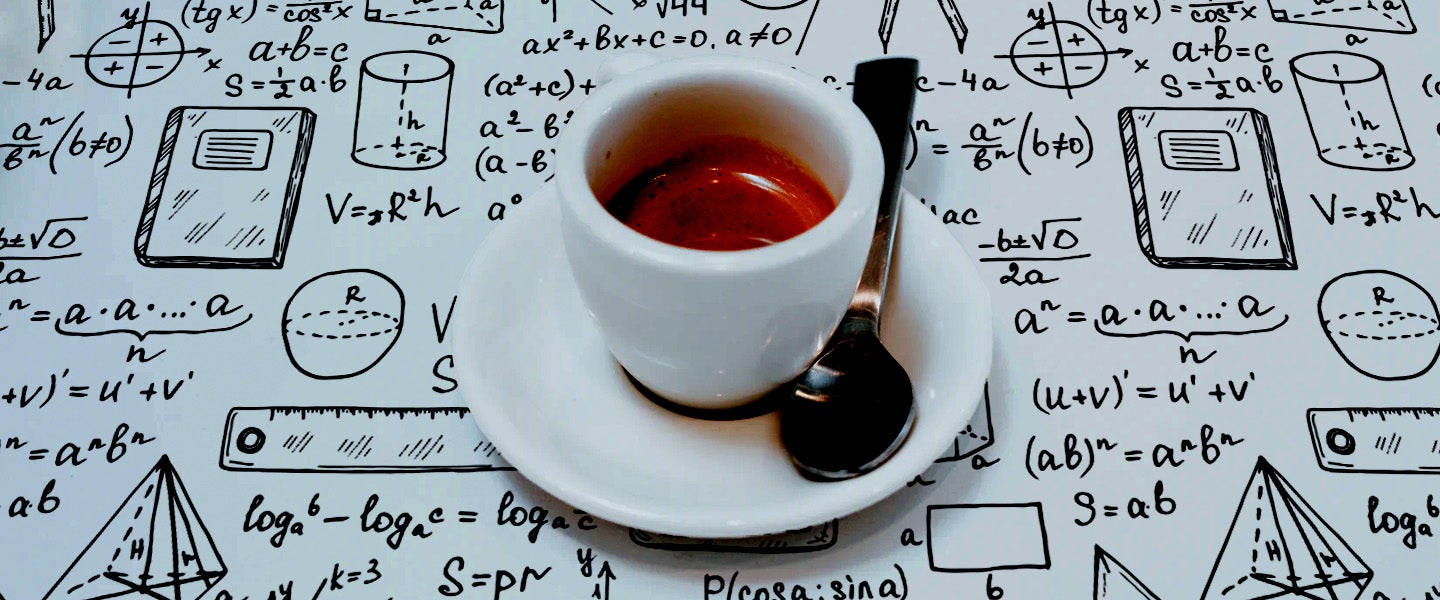There aren’t many mathematically perfect things in the universe: platonic solids; Liz Hurley’s face; the numbers 6, 28, 496 and 8,128 (and by extension, June 28th); and now a simple cup of espresso.
Yes, indeed! Rest easy, java junkies, for a bunch of math, physics and materials experts from the U.S., U.K., Ireland, Australia and Switzerland have succeeded where thousands of suave, mustachioed baristas have failed. Their conclusion? Use fewer coffee beans and grind them more coarsely.
These findings were explained thus in the January edition of the journal Matter:
“‘Most people in the coffee industry are using fine-grind settings and lots of coffee beans to get a mix of bitterness and sour acidity that is unpredictable and irreproducible,’ says co-author Christopher Hendon, a computational chemist at the University of Oregon. ‘It sounds counterintuitive, but experiments and modeling suggest that efficient, reproducible shots can be accessed by simply using less coffee and grinding it more coarsely.’”
In your usual cup of espresso, you’d expect to use about 20 coffee beans, crushing them as finely as possible to create more surface area to make contact with the brewing liquid (usually water). However, the actual relationship between the beans and the liquid was found to be much more complicated when taking into account science-y stuff like the mass of the water and the water pressure: Grind the beans too fine, and they can clog the coffee bed, which not only wastes more beans, it affects the taste, too.
“One way to optimize extraction and achieve reproducibility is to grind coarser and use a little less water, while another is to simply reduce the mass of coffee,” Hendon summarizes.
So not only have the scientists beaten the coffee purists, they’ve even done the (literal) bean counters a favor to boot: dropping the mass of coffee grams per cup from 20 to 15 could save small businesses substantial sums annually, and the whole coffee industry a whopping $1.1billion per year.
“It’s a nice demonstration of the power of science in a realm that you wouldn’t expect it,” says study co-author Jamie Foster, a mathematician at the University of Portsmouth. “In the fallout of the article, we had customers at one coffee establishment blind taste the two cups of coffee using our equation. None of them could tell the difference. A few even raised a preference for the more efficient cup. So, yes, the everyman on the street seems to like it.”
And if you still don’t like the end result? Well, you can always just shove it up your ass.

